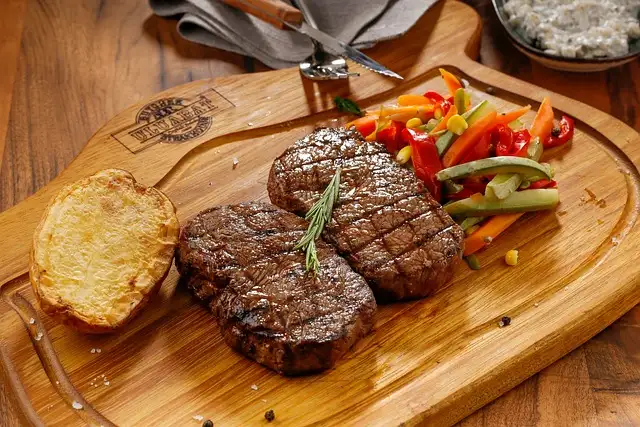Address
1F, Building 13, No.1881, Zhengbo Road, Lin-gang Special Area, China (Shanghai) Pilot Free Trade Zone
Work Hours
Monday to Friday: 8AM - 5PM
Address
1F, Building 13, No.1881, Zhengbo Road, Lin-gang Special Area, China (Shanghai) Pilot Free Trade Zone
Work Hours
Monday to Friday: 8AM - 5PM

Dry-aging is an intricate method of meat preservation that transforms ordinary cuts of beef into culinary masterpieces. This technique involves placing meat in an environment carefully managed for temperature, humidity and airflow for an extended period. As time goes on, its flavor and texture change drastically creating something truly magnificent!
The dry-aging process begins by exposing meat to cool air circulation in an enclosed environment. Over time, moisture loss occurs, leaving only its protective moisture-locking barrier surrounding it – essential in creating intense flavor profiles with this technique. Furthermore, as time progresses and muscle fibers break down over time – tender buttery textures emerge through natural enzymes in its composition which break them down further until yielding delicious tender texture in finished beef cuts.
Setting the ideal conditions for dry aging meats is key to this culinary art form’s success. Most butcher shops and professional meat purveyors maintain designated aging rooms to regulate temperature, humidity and airflow – but with the appropriate setup it is possible for home users as well. Dry-aging can take anywhere from several days up to several months for best results – usually the longer its been aged the deeper its flavor becomes!

During the aging process, meat undergoes numerous transformations. Moisture evaporates while an environment conducive to bacteria development is created. While leaving meat to age in an open refrigerator could promote harmful microorganism growth, controlled dry-aging fosters “good” bacteria development that push out any harmful ones that arise – as opposed to leaving it sitting out unchecked!
Beneficial bacteria thrive in carefully managed environments with constant temperature, humidity and airflow to efficiently digest meat’s chewy muscles, connective tissues, and fats into delicious buttery texture as they produce flavorful sugars and fatty acids. Furthermore, beneficial bacteria oxidize outer lipid layers sealing moisture inside while acting as protective barriers against harmful microbes that might otherwise appear during production.
Not all cuts of beef are created equal when it comes to dry-aging; to achieve optimal results it is vitally important that only high-grade cuts are selected – look for top grade tenderloin roast or beef rib with substantial fat cap and marbling; low grade cuts could become dehydrated during this process and should preferably come from organic USDA Grade Prime meat for best results.
Cuts with generous layers of fat provide optimal conditions, serving both as moisture retention and protecting the meat against harmful bacteria. When possible, large, subprimal and primal cuts of beef should be dry aged instead of pre-cut steaks which do not produce similar impressive results.
Once you dry-aged your beef successfully, the next crucial step should be cooking it to perfection in order to preserve its delicate flavors and textures. Please follow these helpful cooking guidelines:
By carefully selecting and manipulating cuts, environment conditions and techniques for preparation, dry-aging can add extraordinary flavors and textures that elevate every dining experience.